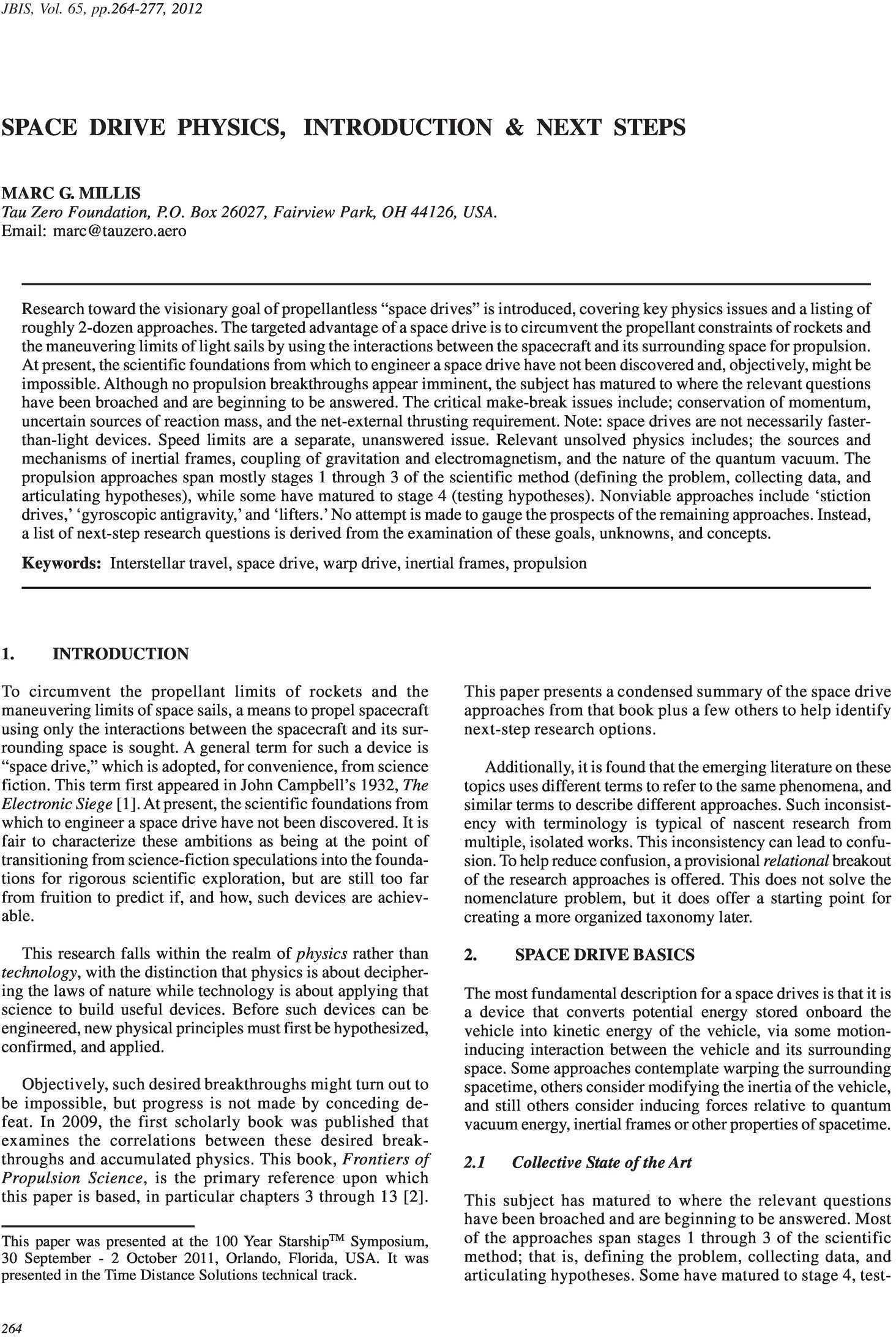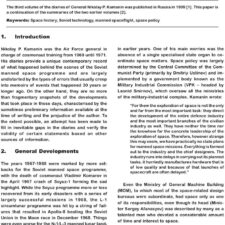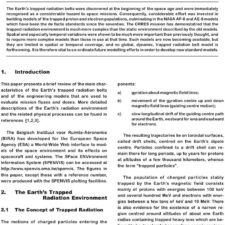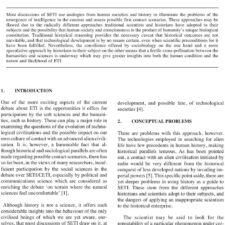Space Drive Physics, Introduction and Next Steps
£5.00
M. G. Millis (2012), JBIS, 65, 264-277
Refcode: 2012.65.264
Keywords: Interstellar travel, space drive, warp drive, inertial frames, propulsion
Abstract:
Research toward the visionary goal of propellantless “space drives” is introduced, covering key physics issues and a listing of roughly 2-dozen approaches. The targeted advantage of a space drive is to circumvent the propellant constraints of rockets and the maneuvering limits of light sails by using the interactions between the spacecraft and its surrounding space for propulsion. At present, the scientific foundations from which to engineer a space drive have not been discovered and, objectively, might be impossible. Although no propulsion breakthroughs appear imminent, the subject has matured to where the relevant questions have been broached and are beginning to be answered. The critical make-break issues include; conservation of momentum, uncertain sources of reaction mass, and the net-external thrusting requirement. Note: space drives are not necessarily faster- than-light devices. Speed limits are a separate, unanswered issue. Relevant unsolved physics includes; the sources and mechanisms of inertial frames, coupling of gravitation and electromagnetism, and the nature of the quantum vacuum. The propulsion approaches span mostly stages 1 through 3 of the scientific method (defining the problem, collecting data, and articulating hypotheses), while some have matured to stage 4 (testing hypotheses). Nonviable approaches include `stiction drives,’ `gyroscopic antigravity,’ and `lifters.’ No attempt is made to gauge the prospects of the remaining approaches. Instead, a list of next-step research questions is derived from the examination of these goals, unknowns, and concepts.





